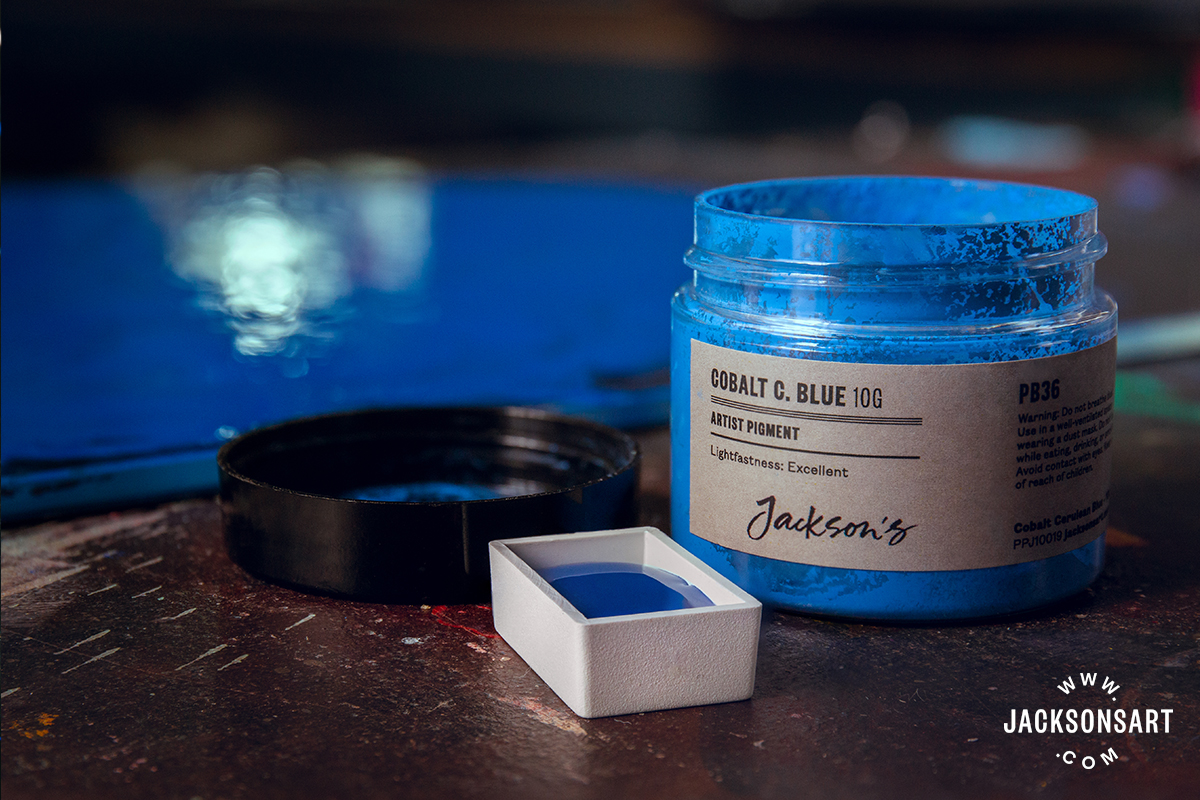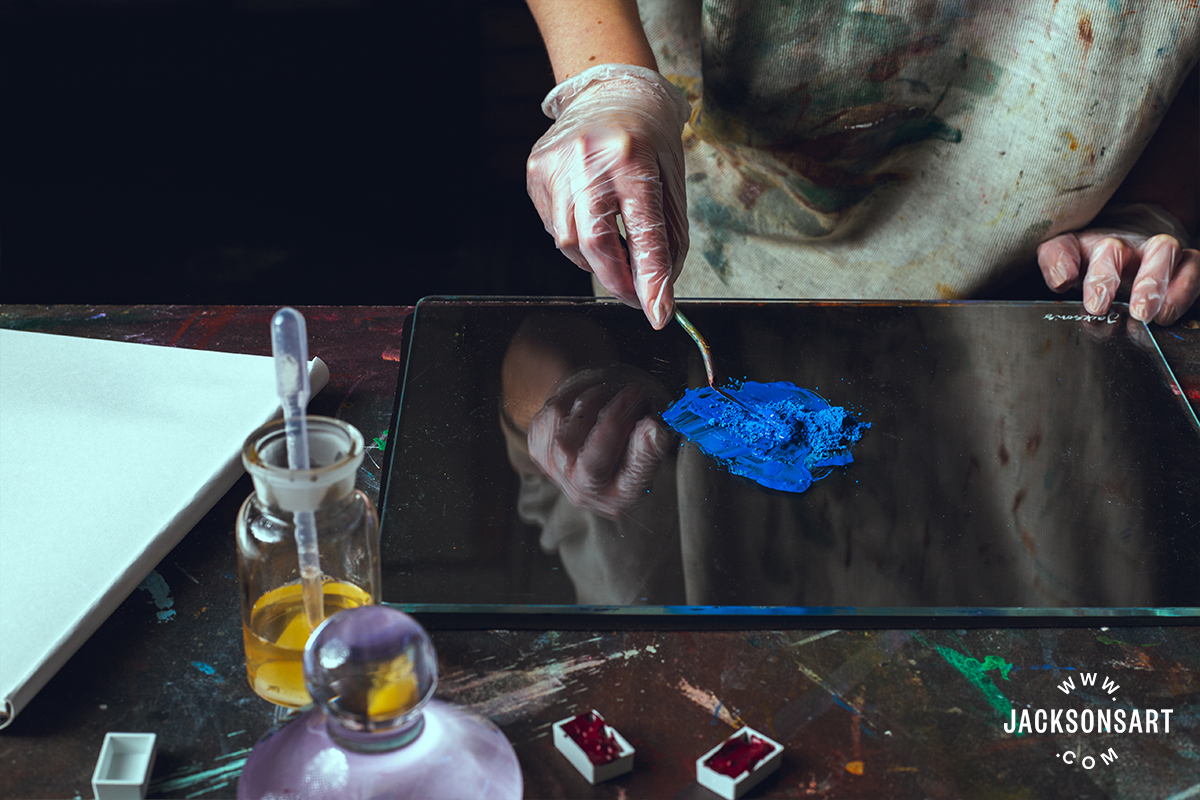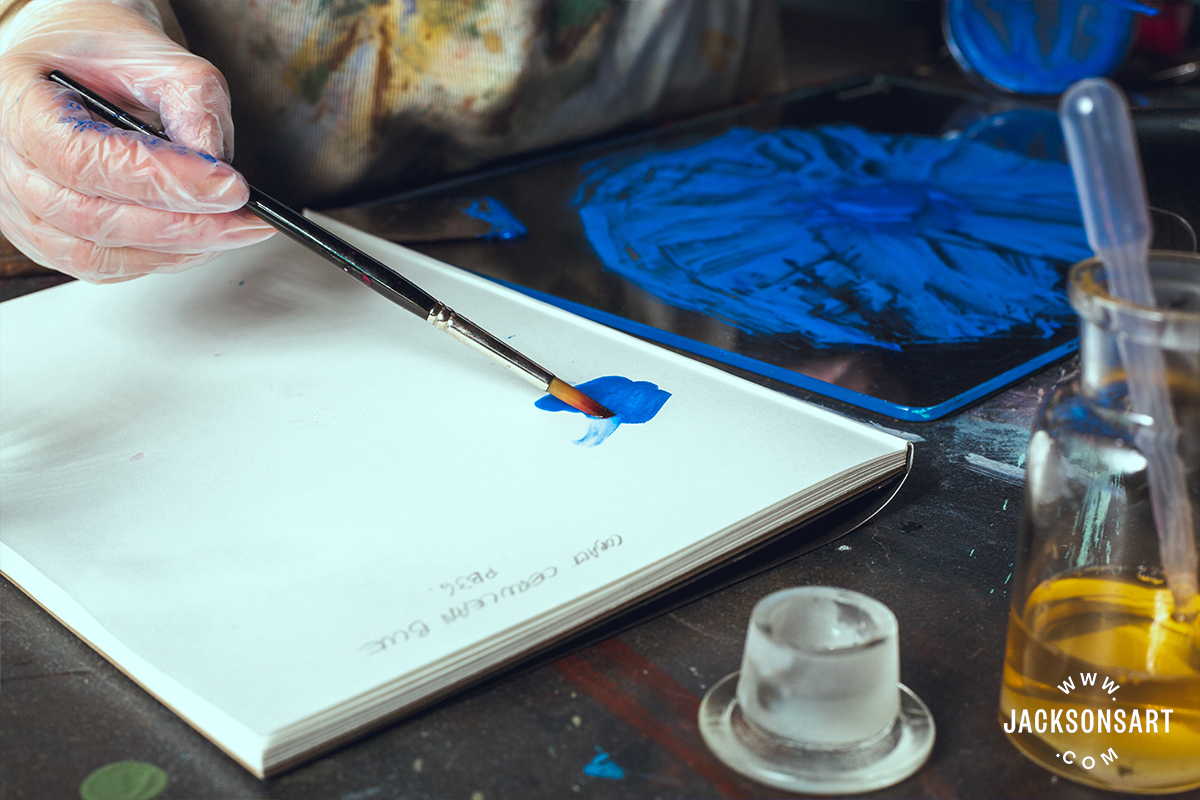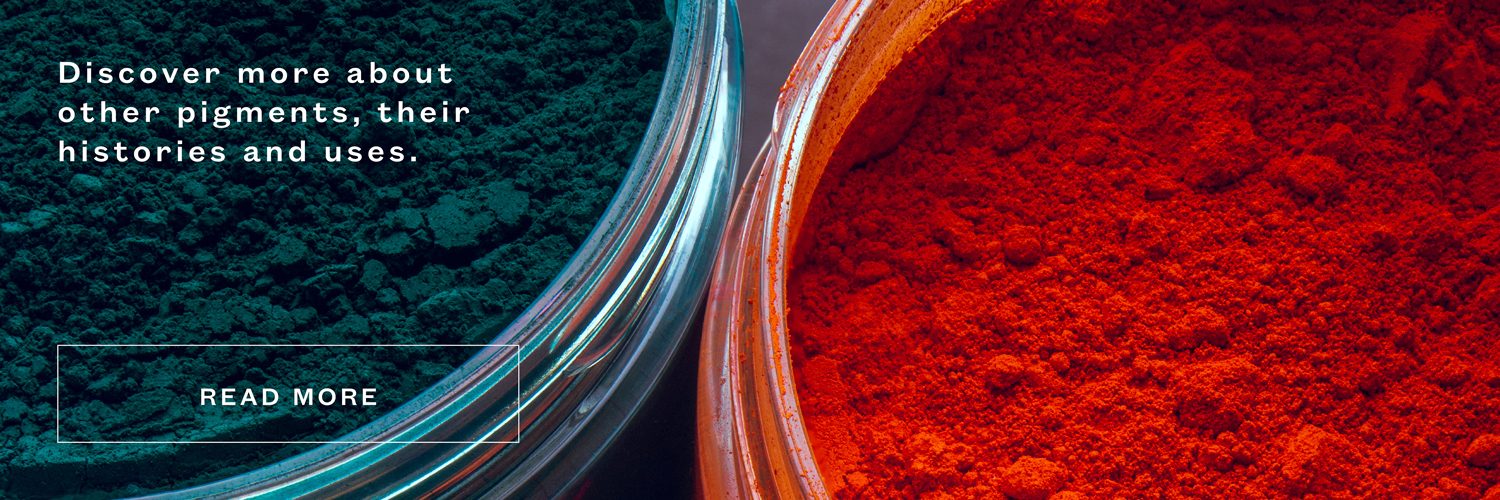How To Make Quality Watercolor Paint
Earlier the introduction of commercially-fabricated paints, artists or their apprentices would brand paint from scratch using pigment and a binder. The beginning mass-produced watercolours were introduced in 1780 and were sold every bit difficult cakes that needed to be dipped in water and rubbed to release the color. At the beginning of the 19th Century, moist watercolours became available in porcelain pans and in 1846, tubes of watercolour paint entered the market (following the introduction of tubed oil paints in 1841). These advances were revolutionary and played a direct role in the development of the impressionist motion, besides every bit opening up new possibilities for plein air painting. Today, information technology can be difficult to imagine a time when artist colours were not available to buy readymade.
Some artists withal cull to make their paints past paw which, while more time-consuming than picking up a tube from an art supplies shop, is a great way of getting in bear upon with the properties of different pigments.

What are Watercolour Paints Made From?
Watercolour is made up of finely ground paint suspended in a binder made of gum Arabic, distilled water, and other additives to preserve and stabilise the paint. Every watercolour manufacturer has a unique formula and method of production, which is why in that location can exist such a difference in consistency and treatment qualities between brands. Manufacturers of professional quality watercolours volition besides accommodate the formula to account for the characteristics of each pigment in their range.
Artists who make their own paints have their own recipes which they will take fine-tuned over time. The following is a list of ingredients that I used to make handmade watercolours in the Jackson'due south studio, some are available from jacksonsart.com, and others can be found in a supermarket or chemist's shop.
Glue Arabic solution
Gum Arabic is a watersoluble mucilage which is extracted from the acacia tree, and it acts as the glue that binds the pigment. Some artists make their own by dissolving gum Arabic pieces in distilled water, merely nosotros besides stock gum Arabic solution which is fix to utilize.
Beloved
Honey is an ingredient in many ranges of watercolour, including our own Jackson'south Creative person Watercolours. It is a humectant which helps the paint retain moisture and re-wet after drying. Honey is also a natural preservative and a plasticiser, meaning that it increases the flexibility of gum Arabic (a naturally brittle folder) and prevent cracking in the pan later on drying. Runny honey is best, rather than the harder variety.
Glycerin
Like honey, glycerin is a humectant and a plasticiser which can be bought at a pharmacy (information technology is a common ingredient in skincare products). I used both love and glycerin in my binder because I detect as well much love to be very sticky, only either glycerin or honey would work on its own.
Clove oil
A natural antibacterial and antifungal agent, clove oil (unremarkably sold as clove essential oil) is an excellent preservative which stops the paint going mouldy.
Dry paint
Our new range of Artist Pigments consists of 100 colours, all of which are suitable for making handmade watercolours. 10g is enough to make around 1-ii full pans of watercolour (depending on the paint), and then it is an platonic size if you lot are trying out a new colour. For larger volumes of paint, they are also available in pots of 100g.
Some pigments, like Cadmium and Cobalt pigments, are toxic and known to be hazardous when inhaled or ingested. Other pigments, similar natural earth pigments, are considered less toxic, only no thing what pigment you are using, avoid breathing in the dust by wearing a face up mask over your mouth and nose. Latex gloves should be worn to protect your hands, as paint can easily get nether your nails. Avoid eating and drinking around dry out pigments and proceed out of reach of children and pets.
Making Watercolour Pigment
60ml of gum Standard arabic solution, one teaspoon of glycerin, ane teaspoon of love, and one drop of clove oil was decanted into a glass bottle and stirred well.

One tablespoon of dry out paint was placed in the middle of a tempered glass palette. Many artists who make their own paint prefer the grinding surface to have a fine tooth, and this tin be created past making a paste with medium grit carborundum pulverisation and water, and grinding information technology into the surface with a muller until the surface is frosted. This helps you mill the paint extremely finely.
The paint I used was Cobalt Cerulean Blue (PB36), one of my favourite pigments in watercolour because of its softly granulating properties. Using a palette knife, I made a well in the middle of the mound of pigment. With a pipette, I dropped 5ml of the pre-mixed binder into the well.

Using the palette knife, I gently folded the pigment into the folder, mixing as much as I could before adding more binder incrementally until all of the pigment was incorporated and the mixture had a yoghurt-like consistency. The amount of folder needed varies greatly depending on the paint used, equally some pigments are more 'thirsty' than others.

With a glass muller, I slowly ground the pigment/folder mixture in a round motion, spreading information technology beyond the drinking glass palette in a sparse layer in order to grind the paint equally finely equally possible. At this point, if the paint is too stiff to mill smoothly, more of the binding mixture should be added.

How long the pigment should exist milled depends on the pigment. Some pigments, like the natural earth pigments, have larger pigment particles and need more time to factory finely than those with smaller particles. I tested the paint forth the way by taking a sample on the edge of the palette pocketknife and swatching it. In that location are a couple of things to wait out for when testing handmade watercolours.
- If the stale paint is dusty and smudges when you run your finger over it, it suggests that there is not enough binder in information technology, so information technology needs a picayune more bounden mixture and more milling.
- If the paint is very shiny or cracks when yous bend the paper, there is too much gum Arabic in the mixture and more paint should be added.
Swatching is the about reliable way to know when to stop milling. The consistency is not and then much of a skilful indicator, as some pigments make more than fluid paint, while others make a heavier-bodied paint.

After around 30 minutes of milling, I was happy with the result. My start tests were a little chalky and very granulating, but equally it was milled more than and more than, the Cobalt Cerulean Bluish developed a slightly greener hue and had more clarity. Using a palette knife, I scraped the watercolour paint from the drinking glass palette, and dispensed information technology into a full pan.
Handmade watercolours aren't as smooth and creamy as shop-bought colours which are milled with a machine, but each has its ain grapheme! In the above image are three handmade watercolour pans with very dissimilar consistencies – Quinacridone Magenta and Natural Sienna Monte Amiata fabricated heavier-bodied paints, every bit they accept a higher pigment to folder ratio. Cobalt Cerulean Blue turned out more fluid and self-levelling. Regardless of consistency, each re-wetted well after drying. Some pigments, similar globe pigments, have a trend to crack when dry in the pan. Adding more honey and/or glycerin to the mixture tin can forestall or reduce cracking.
For larger volumes of paint, watercolour can be stored in a tube. To find out more well-nigh filling paint tubes, read our blog postal service on the subject. It focusses on oil paint, but the same principle applies and nosotros stock 14ml empty aluminium tubes which are a good size for watercolour.
Sentinel our film to come across watercolours existence made in the studio:
Visit jacksonsart.com to find the materials used in the commodity:
- Jackson'south Creative person Pigments
- Gum Standard arabic Solution
- Drinking glass Palette
- Drinking glass Mullers
- Palette Knives
- Pipettes
- Empty watercolour pans
You can find other products related to watercolour painting, such as brushes, paper, and paints, in our watercolour category.
More articles about paintmaking and pigments on our blog:
- The Secrets of Making Jackson'due south Professional person Oil Paint
- David Coles on Colour, Pigments, and Paintmaking
- The Story of Ultramarine Blueish and French Ultramarine

Source: https://www.jacksonsart.com/blog/2020/09/25/making-handmade-watercolours-with-jacksons-artist-pigments/
Posted by: taylornuffeamed.blogspot.com

0 Response to "How To Make Quality Watercolor Paint"
Post a Comment